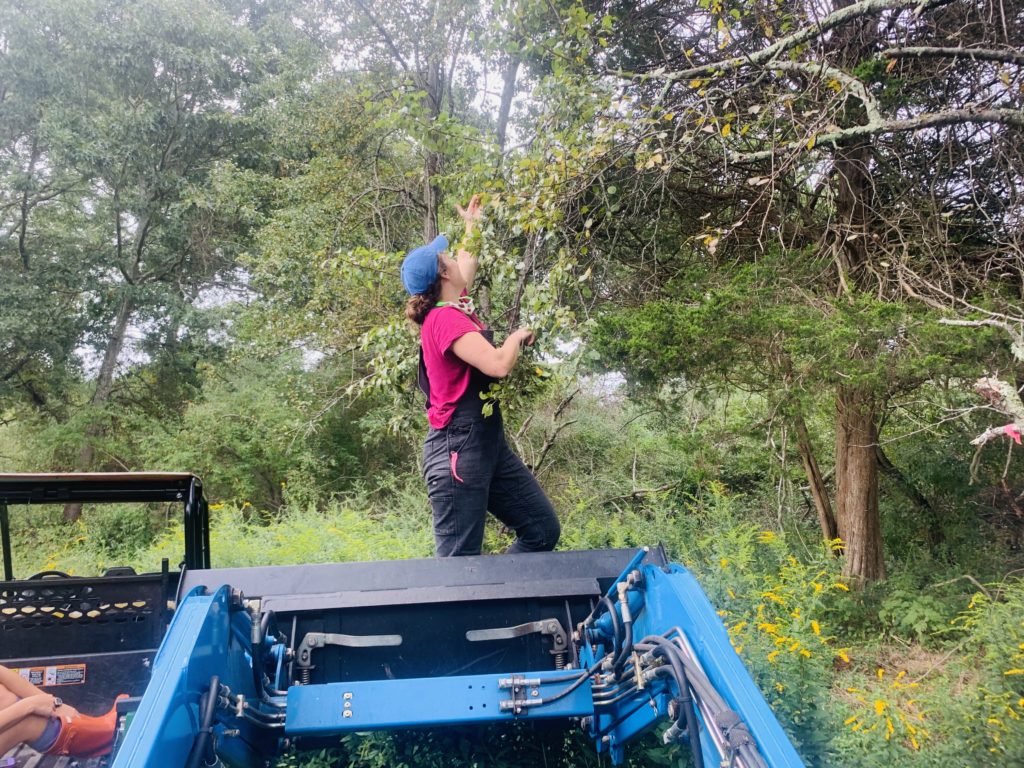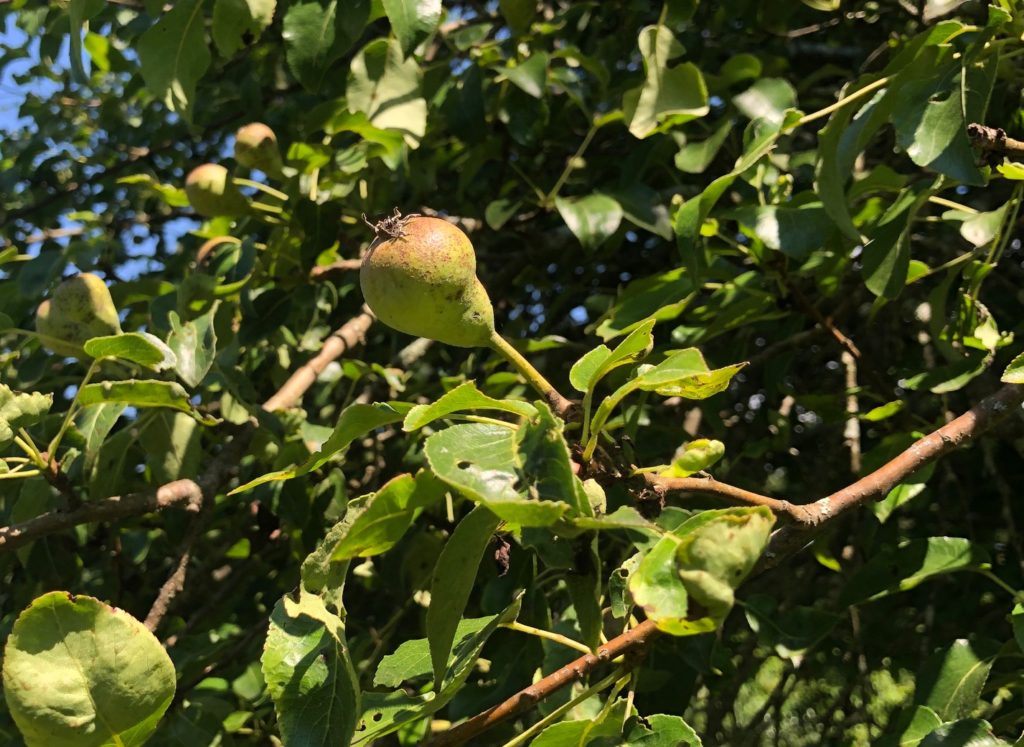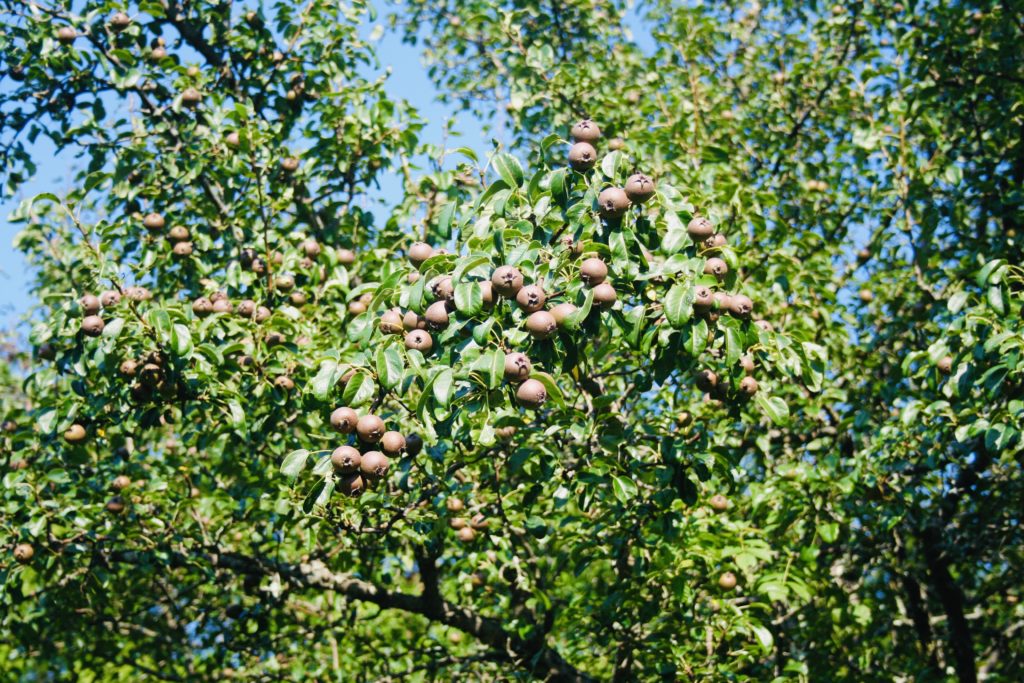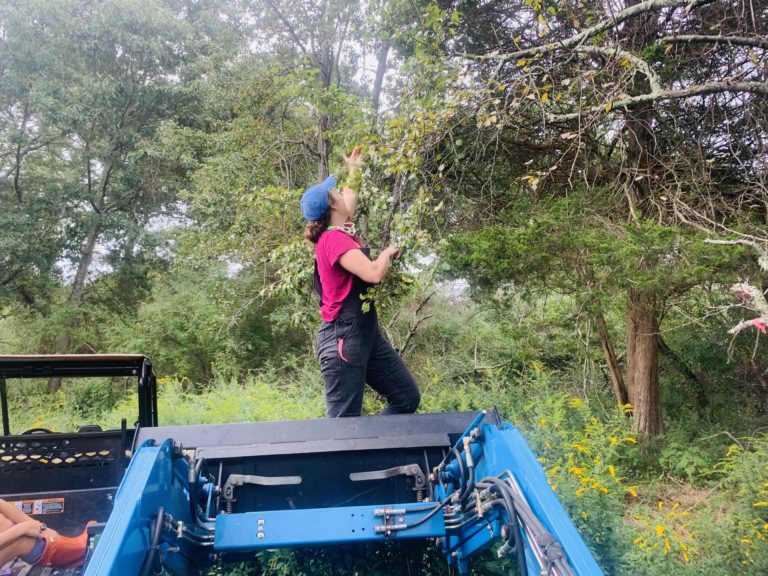This summer, Eliza Greenman returned to the orchard to view the progress and sample the apple trees for genetic analysis. While waiting for those results, our focus shifts to some unexpected and delightful discoveries we have made regarding the pears. As trees were uncovered last winter, we started to notice that there were an unusually large number of pear trees. Our oldest trees seem to lie among the apples, while most of the pears are second generation, meaning they grew from seeds.

Pears were first introduced by early American colonists around 1630. While they take longer to establish, they are generally easier to grow and longer living than most apple trees. In fact, the oldest surviving cultivated tree in America is the Endicott Pear in Dedham, Massachusetts. Estimated to be almost 400 years old, it has survived drought, hurricanes, blizzards, neglect, soil stripping, and even intentional vandalism. It is shining example of the resilience of nature. So much so, that in 1919 James Raymond Simmons noted that despite its age and the scars of a long life, “when in leaf, however, the tree possesses a youthful appearance.”

But why so many pears in the Gallup Orchard? Perhaps it is simply due to their robustness compared to apple trees that more pear trees have survived. Perhaps it has to do with taste and the Greenman family preferred pear galette to apple fritters. Or perhaps, they succumbed to “pear mania” which swept New England between 1820-1870.
During this time, growing pears became a popular social pastime. Farmers held tasting parties and competitions vying to produce the most delicious pears. There was so much interest in growing pears that there were 310 varieties on display at an exhibition of the Massachusetts Horticultural Society in 1852. Despite all the fun, this pastime was also considered a bit of a luxury due to the finicky nature of ripening and storing pears. Thoreau himself was unmoved by the craze, preferring the robust apple that is simply “gathered and barreled” to pears that are plucked “for a pastime” and must be wrapped “each in its paper.”

Beyond their aesthetics, and despite being more difficult to ripen and store than apples, pears were still a valuable food source during the Greenmanville era. Used fresh for eating and in pies they were also use to make pear molasses, pear butter, vinegar, and “perry”. Perry is a fermented drink similar to cider. It is typically made with those pears closely related to wild pears and often considered inedible.
Similar to apples, pears do not retain many of the attributes of the parent tree if grown from seed. Because of this, each one is unique based on its attributes and flavor profile. So far, we have found about 80 of these pear trees in the Gallup Orchard. A recent tasting tour revealed representatives of each taste across the flavor profile, from harshly bitter with tannic acid to deliciously sweet dessert pears. Brix samples ranging from 12-25 confirmed what the tongue already knew. Some of the pears are astringent with low sugar while others were a sweet as a ripe eating pear.

This unique variety of pears in the Gallup Orchard is a gold rush of sorts in regard to the lost art of perry making. Perry making is taking off in the UK following on the heels of the huge increase in the popularity of cider. There is also a growing interest in perry making in the United States. However, newly planted trees can take up to 10 years to produce suitable fruit and trees transplanted from the UK often do not do well, particularly on the east coast. Yet, we have a well-established, climate and site-adapted pear orchard right here at Coogan Farm!

Our theme this past year has been “taking refuge in nature.” As the story of the heritage of Coogan Farm continues to unfold, we focus on the rejuvenation in the Gallup Orchard as inspiration. Henry Wadsworth Longfellow wrote about the Endicott pear tree when it was already 200 years old. “It still bears fruit not to be distinguished from that of a young tree in flavor. I suppose the tree makes new wood every year, so that some parts of it are always young. Perhaps this is the way with some men when they grow old. I hope it is so with me.”

